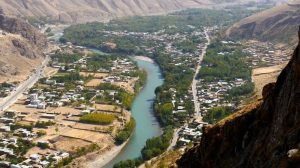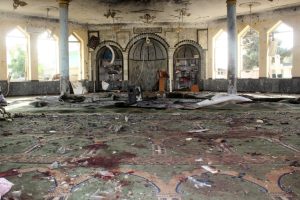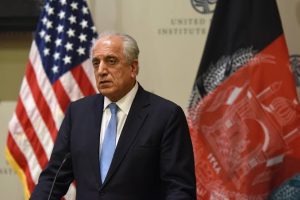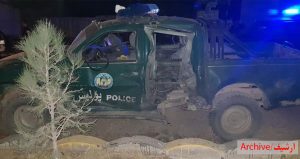Casevac Training Gives Confidence To Afghan Forces

 KABUL: (Middle East Press) Strong medical care forward gives Soldiers more confidence on the battle field…that’s the opinion of U.S. Army personnel training Afghan Special Forces to care for their wounded comrades on the ground and in the air.
KABUL: (Middle East Press) Strong medical care forward gives Soldiers more confidence on the battle field…that’s the opinion of U.S. Army personnel training Afghan Special Forces to care for their wounded comrades on the ground and in the air.
“This training program was set up so Afghan Special Forces can provide combat medicine to casualties at the point of injury and when they’re evacuated for advanced care,” said U.S. Army Lieutenant Colonel Timothy A. Doherty, Deputy Surgeon for the Afghan National Special Operations Command Center. “The mission here is to assist in the development of Afghan medical capabilities to support combat operations and I’m optimistic we’ll get there.”
That’s also the opinion of the U.S. Army personnel who recently performed hands-on flight para-medic training for Afghans in the Kabul area using a Soviet MI-17 helicopter as the demonstration platform. The training program falls under the Afghan Special Mission Wing (SMW), a unique unit of the Afghan National Defense and Security Forces. SMW partners with the Special Forces capabilities of the Ministry of Defense and Ministry of Interior.
“I have a lot of faith in this program, with dedicated training and resources, they’ll get there,” said First Sergeant James M. Conway, a 20-year Army veteran and Flight Medic since 2001. “Right now, they’re on the ground floor.”
1st Sgt. Conway, who served six deployments to Afghanistan and Iraq, says his Afghan trainees will eventually need blood, tourniquets, bandages, IVs, oxygen and other basic equipment, so they can provide the proper care at the point of injury.
“What we are training them to do is not easy,” said Staff Sergeant Timothy J. Ward, Senior Trainer for Standardization Charlie Company, 6th Battalion, and 101st Aviation Brigade. “The ground is stable, but these Soldiers will be in a moving aircraft, with limited space to maneuver, wearing gear and trying to administer an IV.”
“The goal is to have a flight para-medic on each MI-17 along with the pilots and gunners,” said Staff Sgt. Ward, who served four tours in Afghanistan and Iraq. “They can either be inserted with ground troops or get a Troops in Contact (TIC) call and take the wounded, usually from a gunshot wound or IED (Improvised Explosive Device) to a hospital for further care.”
On the aircraft the para-medic manages the patient by stopping the bleeding and controlling pain, said Sergeant Vitaly Tsaregorodtsev, a “Hands-On Demonstrator,” who played the role of a wounded Soldier requiring immediate care during the training session. Students were shown how to assess injuries and stabilize the patient.
“The ultimate goal is stabilizing the patient and getting them to advanced care, such as surgery in 60 minutes, or the ‘Golden Hour,'” said Sgt. Tsaregorodtsev.
Complications such as shock can occur if the patient is not managed quickly, said Lt. Col. Doherty, who has flown hundreds of hours in emergency medical evacuations, including during the Hurricane Katrina response.
“It becomes a priority to transport patients suffering from trauma as fast as possible to an advanced care facility such as a hospital,” he said. “The ‘Golden Hour’ refers to the period lasting for one hour during which there is the highest likelihood that prompt medical treatment will prevent death.”
But the real question is when will the Afghans be able to meet the “Golden Hour”?
The trainers are cautiously optimistic.
“We need to give them everything they need to succeed,” said Sgt. Tsaregorodtsev.
“We have a responsibility to help them,” said 1st Sgt. Conway.
“With more training, they’ll be more comfortable and confident–they’ll get there,” said Staff Sgt. Ward.
“We’re trying to help the Afghans become self-sufficient – we’re trying to work ourselves out of a job-and we’re making progress, but there’s still work to do,” Lt. Col. Doherty said. “They’ve come a long way, but still need our help.”




